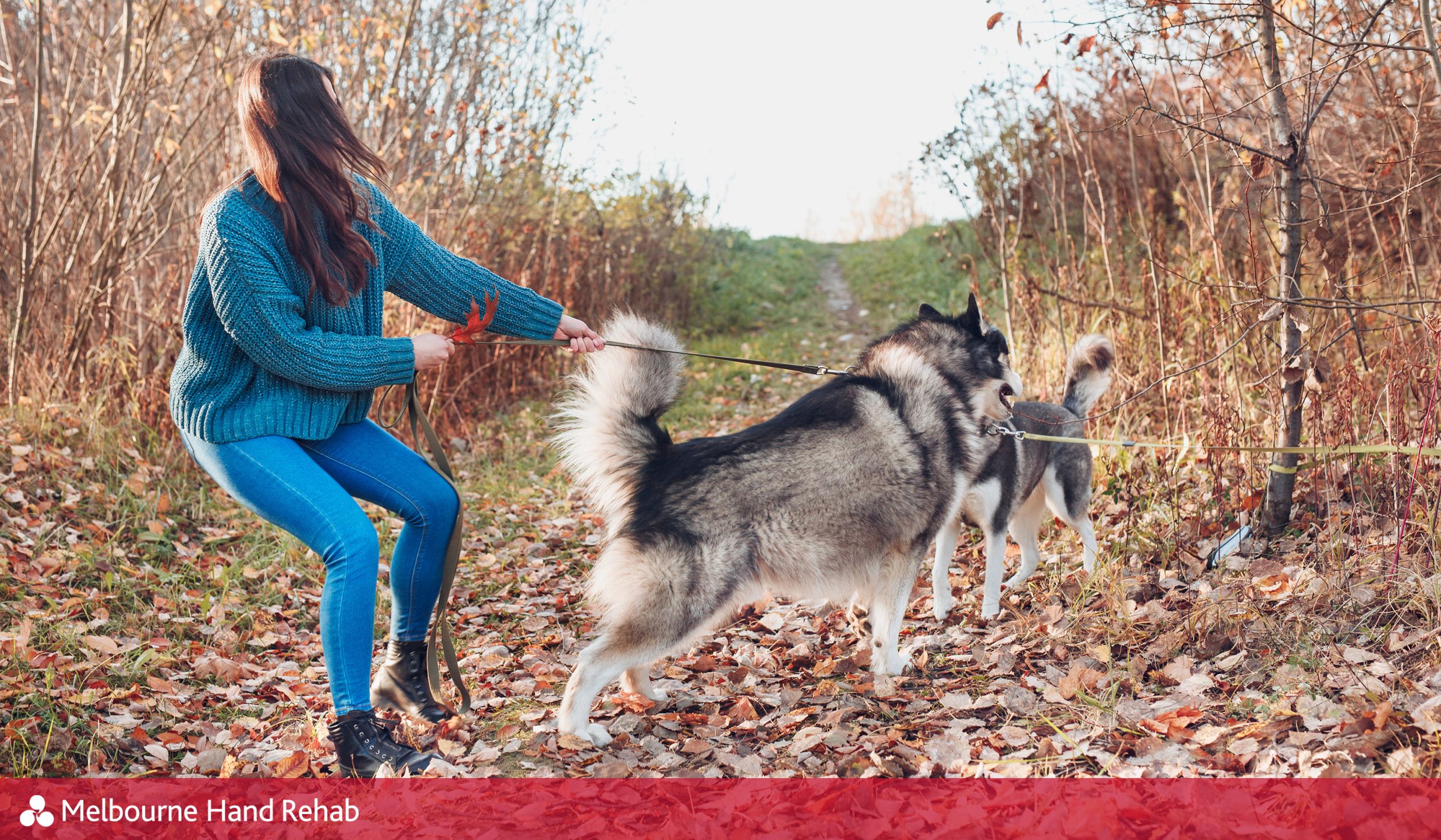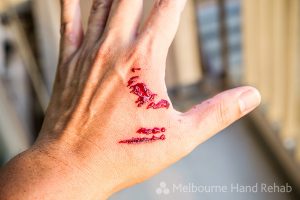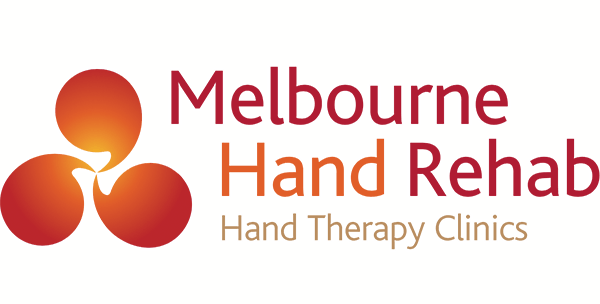
19 Apr Pet-related hand injuries and how to avoid them
You paw thing!!! Hand therapy tips on how to stay safe around your pet
Australians LOVE their pets – almost two-thirds of us have at least one! But as anyone with a pet will know, our furry friends can often be unpredictable causing some nasty injuries.
At Melbourne Hand Rehab, we see a lot of people who have been injured by their pets. So we thought we’d share some information about why this happens, the types of injuries we see in the clinic, and what you can do to lower your risk of getting hurt.
Why you might get hurt
Falling over
Our pets can be fast, quiet, spontaneous, and low to the ground – and this combination makes them dangerous tripping hazards.
If your home has poor lighting, or you walk through the house multitasking (i.e. on your phone), you are more likely to trip over your pet and hurt yourself.
Bites and scratches
Our pets would NEVER bite or scratch us – right? Unfortunately we see a lot of people whose beloved pets have bitten or scratched their hands or wrists.
Pet bites can cause incredibly painful injuries like broken fingers. Thankfully most bites and scratches just cause a small amount of bleeding. However even small bites can lead to quite nasty infections. In particular, cats teeth are razor sharp and full of bacteria.
So if you are bitten by your pet, keep a close eye on the area for increasing redness, swelling or pain as this can be a sign of infection indicating that you should see a doctor. They might prescribe you antibiotics or recommend that the wound needs a few stitches.

Being struck by a dog
We’ve all been in a park and watched two massive dogs running around like crazy with no regard for their surroundings. Unfortunately, many people (particularly those in the older age brackets) are hospitalised because a large dog has bowled them over.
Being struck by a dog often results in knee and wrist injuries, so look out at the park.
Being pulled by a dog
If you have an eager or anxious dog you’ll understand this! When a dog pulls steadily on the leash, it’s one thing, but when they start running with some slack in the leash and hit full speed before tension develops, you can find yourself in BIG trouble.
At Melbourne Hand Rehab, we’ve seen patients with very nasty broken fingers after being pulled by dogs on leashes. Usually it is because at the moment of the pull, the leash wasn’t being held firmly and became tangled around one finger.
How to avoid getting injured
Often, there is a fairly reasonable explanation for why your pet has bitten or scratched you. For instance, our pets are more likely to attack us if they are distressed, confused or sick. So to lower the risk of being bitten or scratched, move slowly with an injured pet, and resist the urge to comfort them with a hug.
Our tips for avoiding a trip over your pet:
- Teach your pet to stay away from busy areas (like the kitchen)
- Make sure you wear well-fitting shoes with grippy soles
- Avoid walking around your home in the dark (you won’t be able to see your pet)
- Try not to multitask (such as writing text messages) as you walk through the house, especially if your pet tends to get underfoot
There are a lot of tips and tricks on the internet about how to stop a dog from pulling on their lead, but all we can say at Melbourne Hand Rehab is – try to be vigilant.
- If your dog pulls when they see another dog or cat, try to stay focused on your walk so that you can see animals approaching and anticipate the pull
- Try to hold the leash firmly with all fingers, so that one finger is never pulled in isolation
We hope that these tips help you enjoy spending time with your pet in a safe way
At Melbourne Hand Rehab, we provide hand therapy care and advice for people experiencing pain or injury to their hand, wrist or arm. We are here to help you take care of you if you have experienced a pet-related injury.
Book an appointment today with one of our physiotherapists or occupational therapists
BOOK AN APPOINTMENT
For more information, call us directly on 03 9458 5166
By Ed Antonov


